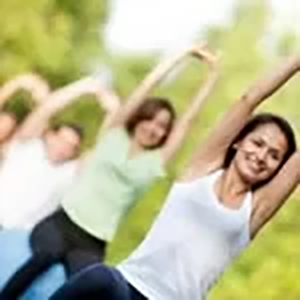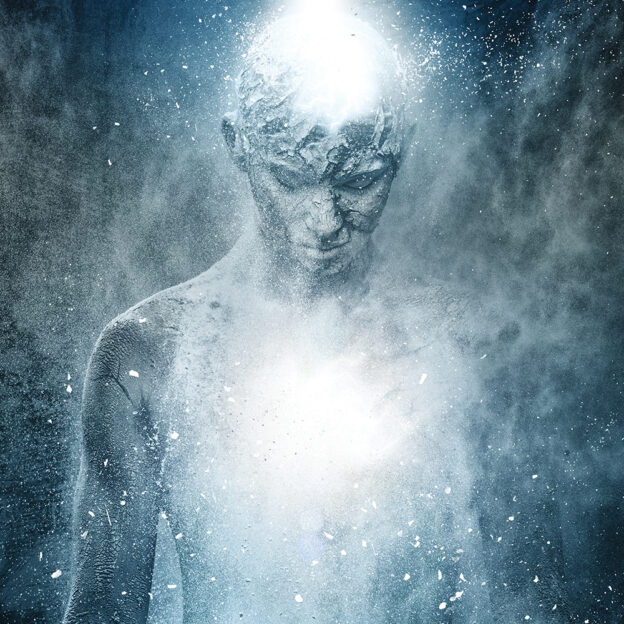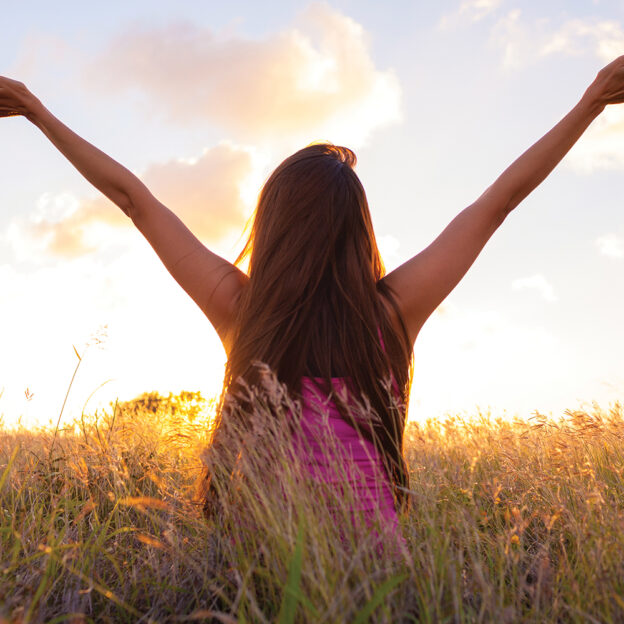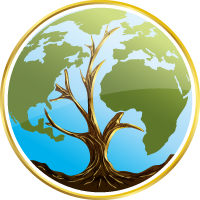By Meg Charendoff, Well Being Journal, Vol. 15, No. 6.

Pilates is one of the hottest trends in fitness. Actress Julia Roberts claims Pilates helped her shed all the weight from her recent twin pregnancy. Pop star Madonna credits her still awesome body to rigorous Pilates workouts (two-hour sessions in a superheated room!). But Pilates is not just for the young and fabulously famous.
Sylvia Glassman, 67, a rubber-stamp artist from Elkins Park, enjoys her weekly Pilates session. She credits Pilates with keeping her active. “The fact that I’m still able to be as active as I am has got to be because I do Pilates,” she says. “It makes me feel better. I’ve seen an improvement in my flexibility, and I think it enables me to move more freely. I like the mental picture I have of myself as someone who doesn’t move like some older people do.”
Glassman, a lifelong exerciser who also walks, lifts weights, and does yoga, has been practicing Pilates since before it was fashionable. Like many seniors, Glassman suffers with muscular-skeletal conditions including osteoarthritis and osteoporosis. On the advice of doctors and “just my own common sense,” she has modified her exercise routines over the years. Pilates helps her stay fit despite her limitations.
I couldn’t do some of the things I liked to do anymore,” she says. “I couldn’t exercise and work my muscles in the usual way, so I began to look for other ways to work those muscles.”
Pilates is an excellent form of exercise for active seniors. Not only can it help seniors look and feel better, but practiced regularly and properly, Pilates also helps prevent or improve some of the conditions that can occur as our bodies age—stiffening muscles and joints, postural changes, osteoporosis, and osteoarthritis. And Pilates exercises can be modified for the individual abilities of the exerciser, making it a great choice for people with injuries or limitations.
“Pilates is good for everybody!” says Carol Rachel Shore, a certified Pilates practitioner and owner of This Is Pilates!™ in Jenkintown, PA. At least sixty percent of Shore’s clients are over 55.
“Pilates is designed for any level of health and fitness,” Shore says. “In fact, the assisted work on the equipment was originally created for people who were bedridden.”
Rob Kiewe, health and fitness director for the Betty and Milton Katz Jewish Community Center in Cherry Hill, NJ, also recommends Pilates as a fitness activity for seniors.
“Pilates is a safe, non-impact, non-stress exercise,” he says. “It’s good for flexibility and balance, which is important for preventing injuries and falls. And it makes the whole body feel great.”
Small, Precise Movements
Pilates is the method of movement designed by Joseph Pilates to strengthen, stretch and balance the body. From about 1912 to 1926, Joe (as he is known to Pilates devotees) developed the system of original exercises, which are performed on the floor (mat work) or on spring and pulley based equipment (the reformer, a low platform on a track with adjustable springs; the cadillac, a padded table and frame with springs, bars and straps; and the chair, a padded box with a spring-loaded footrest).
Although it sounds like a cross between yoga and circus arts (some of the more advanced exercises do look like a trapeze act), Pilates is neither. Pilates emphasizes form and alignment. The movements are performed precisely, in a smooth, slow, controlled way, and are coordinated with specific breathing patterns. The exercises work the muscles efficiently, so each movement is repeated only a few times.
Pilates is also progressive and adaptable. Everyone starts out learning the basics—the movements, alignment, breathing, concentration, and flow—essential to Pilates. Then specific exercises are added according to individual needs, abilities and limitations.
“Anybody can do Pilates,” stresses Naomi Mindlin, a certified Pilates instructor at This Is Pilates!™. Mindlin, 56, admits she is “technically” a senior and adds, with a wry smile: “For those of us who have gained a little weight as the years have passed and are not our twenty-something selves, Pilates is a safe way of moving. You don’t have to be at an ideal weight, or have an ideal body type. It’s supposed to be for regular people.”
Big Benefits
Pilates, done properly, stretches and strengthens muscles at the same time. Unlike traditional strength training—weight lifting machines—which may shorten and tighten muscles, Pilates lengthens muscles, increasing strength and flexibility.
Pilates focuses on the core muscles of the body, which both Shore and Mindlin quickly explain are not the stomach muscles everyone thinks of when they hear the popular fitness term “core strength.”
“Like the core of an apple,” Mindlin suggests. “The core of an apple is all along its center. The core of your body is your spine. The core muscles are the muscles closest to and supporting your spine, including your deep abdominal muscles.” Core strength is important for everyone but especially for older people, says Mindlin. “One reason people fall forward, collapsing in on themselves, is that gravity is winning. When you strengthen your core, you’re fighting gravity.” Pilates can help counteract these changes in posture and the loss of height that can occur with age by strengthening the smaller stabilizing muscles of the trunk that are weak or out of balance.
Pilates, properly practiced, also improves alignment, balance and body awareness, all of which are crucial, not only to helping seniors look and feel better, but also to preventing injuries and falls. The muscles in our bodies can become out of balance from age and improper use, explains Shore. Some muscles are overused and others are underused. When the underused muscles are strengthened, the balance and alignment of the whole body is corrected. And when the body is aligned, movement becomes easier. “It’s like when you have your tires aligned, the car runs better in all ways,” Shore says.
Correcting muscle imbalances also improves joint movement. When the muscles surrounding and supporting a joint are out of balance—one set is stronger than the opposing set—the joint doesn’t move properly or easily, and may be compressed. Retraining and rebalancing those muscles increases space in the joint, improves joint function and stability, and can help reduce pain, even where osteoarthritis is already present.
Better balance and alignment create better body awareness—a better understanding of where the body is and how it moves in space. Both Shore and Mindlin stress that Pilates is functional fitness.
“If you think about the principles, not just the movement of the particular exercises, you can apply it to everyday life,” says Mindlin. “After all, you live with your body 24/7.”
Glassman agrees. “Pilates work is complementary to everything else. I’m starting to pay attention to how I keep my body aligned, whether in my other workouts or daily life. How I stand, lift, bend. Pilates creates more body awareness. You’re not just doing Pilates for the hour that you are doing your program. You take it and use it in the rest of your life.”
In fact, Pilates can help active seniors stay in the game—the tennis or golf game. Sue Trichon, 59, of Meadowbrook, plays tennis two to three times a week.
“I do Pilates so that I can play tennis actively without having to take Advil,” she says. “I’m not stiff in the morning. And when I finish playing, I’m fine.”
In addition to improving strength and flexibility, Pilates can help golfers improve their spinal extension and rotation, and increase their Y-score. Martin “Dutch” Duchovnay of Jenkintown knows Pilates has helped his golf game.
“I’ve gone from horrible to very bad,” he says with a laugh. Duchovnay took up Pilates over three years ago to improve his swing.
“As you age, your ability to turn from the waist and the shoulders is impeded,” he explains. “It was difficult for me. Pilates made it easier. Pilates also made me feel like a million dollars.”
Because Pilates focuses on the connection between mind and body, it also offers meditative benefits—increased energy, improved concentration and better coordination.
“There’s a certain challenge to Pilates,” says Glassman. “It takes a lot of concentration, dedication and patience. As you get older, it’s important not only to keep moving, but also to keep your mind active. I like the idea of having a challenge.”
Getting Started
“Seniors shouldn’t just pop in a video or drop into a class at the gym,” cautions Shore. “You need to know your teacher is certified through a comprehensive training program.” (See www.pilatesmethodalliance.org for more information.)
Although this advice applies to everyone beginning a Pilates practice, it’s crucial for seniors who may have conditions (osteoporosis, osteoarthritis, hypertension and some eye conditions, for example) for which certain movements are contraindicated.
“You want a teacher with experience working with various ailments,” advises Shore. “Or who is willing to do some research. You want her to know what your physical considerations are.”
With a properly trained instructor, both group classes and one-on-one sessions have benefits. With private sessions, you get the instructor’s complete attention.
“It’s all about that one person’s body,” says Shore. “Whatever that body needs today, whatever I see when the client walks into the session. I might have to throw out what I prepared and do something different. I’m not teaching from a list and the goal isn’t to get through a specific number of exercises. My goal is to have the person walk out stronger, taller and more open, with more ease and less pain.”
Although Pilates group classes are an invention of the fitness industry, they have some advantages for seniors. Classes are less costly and more accessible. They also provide an opportunity to socialize, notes the JCC’s Kiewe. With a properly trained instructor, a group class can also be a challenging workout.
Many instructors do recommend having some Pilates experience before attempting a group class. Shore requires clients to have at least three private sessions before attending her mat class. She uses these one-on-one sessions to evaluate her clients’ physical conditions, identify their individual needs, and familiarize them with Pilates principles, movements, and terminology.
The original version of this article was printed in The Jewish Exponent, The Good Life Special Supplement, May 2005. This updated version was printed in Well Being Journal, November/December 2006, Vol. 15, No. 6.
About the Author:
Meg Charendoff is a former attorney (Temple University’s James E. Beasley School of Law) who is now a freelance writer (some of her non-fiction stories appear in Chicken Soup for the Dog Lover’s Soul and Chicken Soup for the Cat Lover’s Soul). She writes about health and fitness, landscape architecture, wedding planning, and trading card collecting. She is also a member of the editorial board for the literary magazine Philadelphia Stories. She lives and writes outside of Philadelphia, Pennsylvania, and is the mother of four young children.





